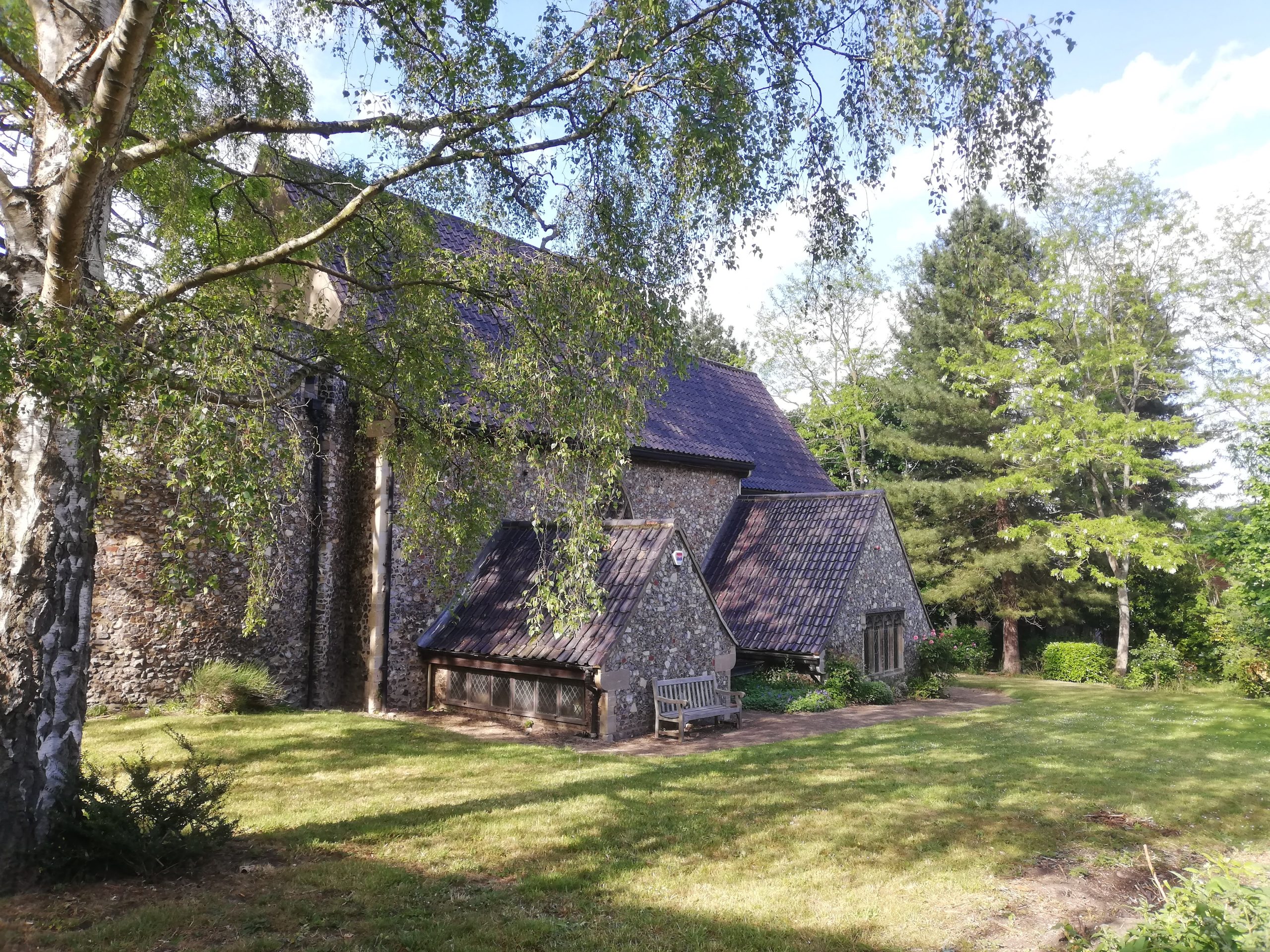Many people will share in celebrating and learning from a woman of the fourteenth century about whom we know next to nothing. Why? Because her Revelations of Divine Love, the first known book written by a woman in English, has become a spiritual classic known and loved by millions and a guide to many in the way of faith, hope and love.
Julian of Norwich has become England’s most widely known female visionary. In May 1373, when she was thirty years old and suffering what was believed to be a terminal illness, she experienced a series of sixteen visions or ‘shewings’ which revealed aspects of the love of God. Following her recovery, she spent the rest of her life pondering their meaning and implications and recording her insights in writing. She became an anchoress, living in the cell attached to the small church of St Julian off King Street in Norwich, and from that cell and that time her influence has radiated to the present day and across the world.
So it is that this year we give thanks for the 650th anniversary of the Shewings which Julian received, and for her spiritual teaching and holy wisdom. Of her, Thomas Merton wrote: ‘Julian is without doubt one of the most wonderful of all Christian voices… I think that Julian of Norwich is with Newman the greatest English theologian.’
A programme of events to mark this significant anniversary will run throughout the year and has begun this Candlemas with a two-day online conference, hosted by the Companions of Julian of Norwich, exploring how we can be like Julian today as contemplative people of compassion, service and prayer. Talks at the conference were given by members of four religious communities as well as the Bishops of Norwich and Wakefield.
Later in the year a five week online Lent course will draw together participants from around the world to read Sr Elizabeth Ruth Obbard’s Through Julian’s Window, and in July a garden festival in and around St Julian’s, offered in partnership with Norwich in Bloom, will fill the church and its environs with colour and beauty. During the summer artists will be drawn together to offer a series of public workshops as part of an extensive art project culminating in an autumn exhibition across two sites, and a new anthology of poetry, currently in preparation, will be published in the early summer. On the first Saturday of each month from June to October, there’ll be a series of public lectures with visiting speakers selected for their insight into Julian’s life and witness and their ability to communicate it to new audiences.
The anniversary week itself, following hard on the heels of the Coronation, runs from Sunday 7 May to Sunday 14 May. We will lay the ground for it with a whole day of silent prayer in St Julian’s Church on Friday 5 May. On Monday 8 May, the Feast of Julian of Norwich in the Church of England’s calendar, the Eucharist will be celebrated in St Julian’s and later in the day a specially-reconstructed service of Vespers will be sung in Latin by women’s voices in a style with which Julian might have been familiar in 1373.
Throughout the week there’ll be talks, presentations, a walk round the locality and author events, as well as daily worship. A ‘Cloth of Kindness’ consisting of embroidered panels which give testimony to experiences of human compassion and warmth will be unveiled. Saturday 13 May will be a festival day with a Sung Mass in the church followed by a lecture given by Professor Barry Windeatt and then workshops after lunch, and a procession through the area will follow the Parish Mass the next day.
We are commissioning a new seat for the churchyard garden, adjacent to the Julian cell, as a physical commemoration of the anniversary and a place where pilgrims and visitors can rest. This bespoke and functional piece of public art, in oak and slate, will incorporate some of Julian’s words and is being created by the letter carver Martin Cook, whose previous commissions include work for the British Museum and the Royal Family. Contributions towards the cost are now being invited.
The whole year will be undergirded by the steady rhythm of daily public worship and private prayer in St Julian’s Church, which is open all day every day for prayer, quiet and visiting. The Eucharist is celebrated frequently. We also expect to welcome many visiting groups from the Diocese, the country and overseas, and will be able to accommodate visitors in the splendidly-refurbished All Hallows House, the Shrine’s guesthouse which offers a unique urban retreat adjacent to the church. Room bookings can be made at www.allhallowsnorwich.co.uk
These are only highlights of the whole programme, which will be published at the beginning of Lent. We warmly invite people near and far to come and share in this year’s thanksgiving and to see with the eye of the heart something of what Julian saw 650 years ago.
Written by The Revd Richard Stanton, the Parish Priest of St John the Baptist, Timberhill with St Julian, Norwich, Priest Director of the Julian Shrine and co-chair of the ‘Julian650’ working group.
For more information: www.julianofnorwich.org


